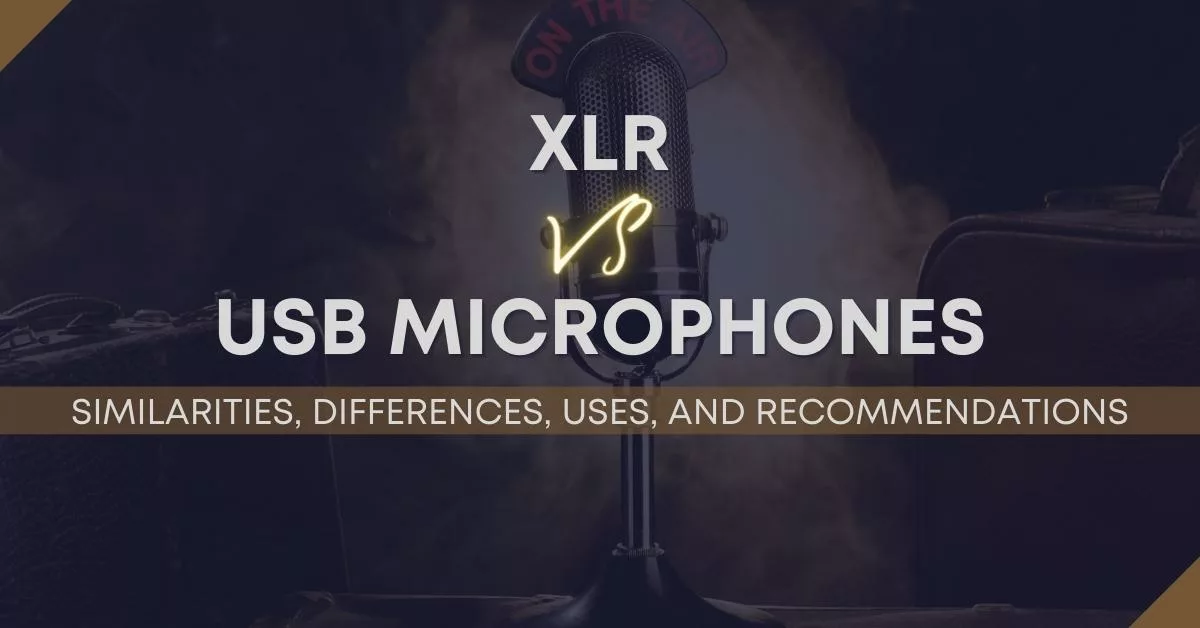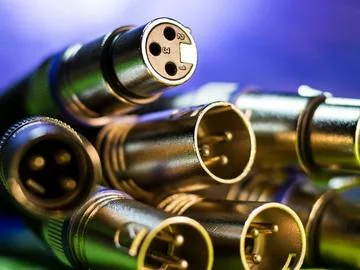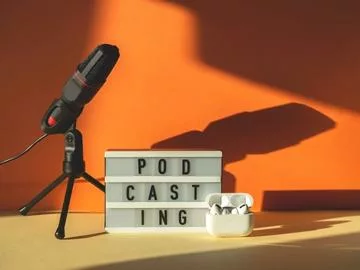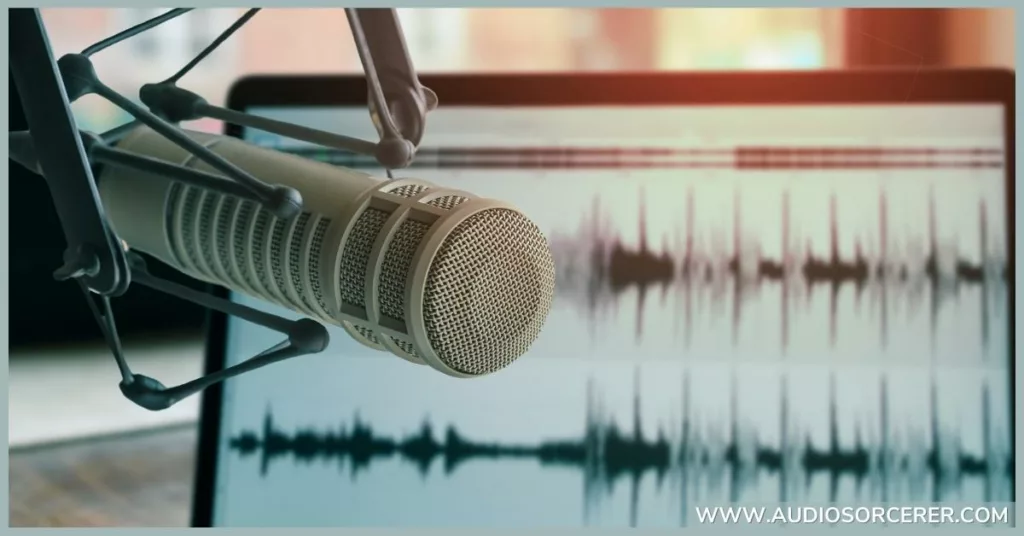
If you're a musician, podcaster, or content creator, you know that choosing the right microphone is crucial for recording high-quality audio. When it comes to modern-day microphones, there are two primary types: XLR and USB. In this blog post, we'll take a closer look at XLR vs USB microphones, their similarities and differences, their use cases, and the top three best microphones of each type.

An XLR microphone is a type of microphone that uses a three-pin XLR connector to transmit audio signals. XLR mic connectors are commonly used in professional audio applications, such as live performances and studio recording.
XLR microphones are often preferred over USB microphones because they offer better audio quality, more versatility, and more control. XLR mics are almost always more expensive than USB microphones, but they're worth the investment if you're serious about producing professional audio content.

A USB microphone is a type of microphone that connects directly to your computer via a USB port. USB microphones are often preferred over XLR microphones because they're easy to use, affordable, and don't require any additional equipment to get started.
USB microphones are a great option for beginners or content creators who want to produce quality audio without investing too much money or effort. However, USB mics may not offer the same audio quality, versatility, or control as XLR microphones.
XLR and USB mics both capture audio but through different connections. Those similarities and differences are just a few between this two types of microphones. Let's first look at what they have in common.
Convert sound waves into electrical signals: Both XLR and USB microphones use diaphragms to convert sound waves into electrical signals that can be recorded or amplified.
Large amount of options: Both XLR and USB microphones come in different types and sizes. You will find options in both dynamic microphones and condenser mics for each type. Depending on the model, they both can offer switchable polar patterns.
Various applications: Whether you use a XLR or USB microphone, know that it can be used in various scenarios. These include applications such as music recording, podcasting, live streaming, voiceover, and more.
Related Article: The Top 5 Best Mics For Podcasting | Professional Options For All Budgets
Connectivity: The most significant difference between an XLR and USB microphone is their connectivity. XLR microphones require an XLR cable to connect to an audio interface or mixer, which then connects to a computer or other recording device. USB microphones, on the other hand, connect directly to a computer via a USB cable.
Audio quality: Generally, XLR microphones sound better than USB microphones. This is because XLR mics can transmit a higher quality analog signal to an audio interface or mixer, which can then convert the signal to a digital signal with less noise and distortion. USB microphones, however, rely on their internal A/D converters which typically aren't as good as an interface.
Versatility: XLR microphones are more versatile than USB microphones because they can be used with a variety of audio equipment. Through an XLR connection, they can be hooked to audio interfaces, mixers, preamps, and other devices, which can provide more manipulation over the audio signal. USB microphones, on the other hand, are limited to a direct computer connection and any configuration software they provide.
Price: XLR microphones are generally more expensive than USB microphones. This is because XLR mics require additional equipment, such as an XLR cable and an audio interface or mixer. USB microphones, on the other hand, are more affordable because they don't require any additional equipment.

Both XLR and USB microphones can be used for a variety of applications, but they each have their own strengths and weaknesses.
XLR microphones are ideal for professional audio applications, such as studio recording, live performances, and broadcast. They offer superior audio quality, more versatility, and more control over the audio signal. XLR mics are also preferred by audio professionals who want to customize their setup and achieve the best possible audio quality.
USB microphones, on the other hand, are ideal for content creators or musicians who are just starting out. This is because they are more affordable and easier to setup. They're great for podcasting, video conferencing, voiceovers, and basic music recording. USB microphones are also very portable and easy to use, making them a great option for content creators who are always on the go.
Related Article: The Top 5 Best Microphones for Recording Vocals In 2024
As we've discussed in the prior section, there are specific use cases for these two types of microphones. If you want to produce professional audio, whether it be for music, live performance, or broadcast, then an XLR microphone is for you. If you are a content creator or just starting to dabble in audio recording, then a USB microphone is all you need.
If you're looking for a high-quality XLR microphone, here are 3 popular choices all with different flavors:
Rode NT1: The Rode NT1 is a popular XLR condenser microphone that's known for its clean and transparent sound. It features a 1-inch capsule, a cardioid polar pattern, and a low self-noise level. It is one of the most affordable, professional mics you can get for recording vocals.
Shure SM7B: The Shure SM7B is a legendary XLR microphone that's been used by countless musicians and podcasters over the years. It features a dynamic mic element, a pop filter, and a switchable bass roll-off and mid-range boost.
AKG C414 XLII: The AKG C414 XLII is a versatile XLR microphone with 9 switchable polar patterns. It's great for recording just about any instrument you can think of in the studio. With its legendary sonic character and pristine sound quality, this microphone will be first and last one you ever need!
If you're looking for a high-quality USB microphone, here are the 3 of our recommendations:
PreSonus Revelator: The PreSonus Revelator is an affordable USB microphone with built-in effects and a software package. It is great for basic music recording, podcasting, and content creation. It features 3 different polar patterns allowing it to handle a variety of different production scenarios.
Blue Yeti X: The Blue Yeti X is a popular USB microphone that's great for podcasting, streaming, and voiceovers. It features four different polar patterns, a mute button, and a headphone output for monitoring.
Shure MV7: The Shure MV7 is a high-quality USB condenser microphone that's great for podcasting and broadcast. It features a cardioid polar pattern, a headphone jack for monitoring, and a high-quality audio interface built-in. The Shure MV7 is basically the USB version of the Shure SM7B.
In conclusion, when it comes to USB vs XLR microphones, each have their own strengths and weaknesses. XLR microphones offer better sound quality, more options, and more control over the signal, but they're more expensive and require additional equipment. USB microphones are more affordable, easy to use, and portable, but they may not offer the same quality or versatility as XLR mics.
Ultimately, the choice between an XLR and USB mic depends on your specific needs and budget. If you're a professional audio engineer or musician, an XLR microphone may be the best option for you. But, if you're a casual user or content creator, a USB microphone will do just fine.
Using the information in this article, along with careful consideration, you can find the microphone that best fits your needs and helps you create the high-quality audio you desire.
"Some of the links within this article are affiliate links. These links are from various companies such as Amazon. This means if you click on any of these links and purchase the item or service, I will receive an affiliate commission. This is at no cost to you and the money gets invested back into Audio Sorcerer LLC."
Thank you for sharing this insightful post. I found it to be engaging and informative, and I appreciated the unique perspective that you offered. Keep up the excellent work.
Thanks so much and will do!